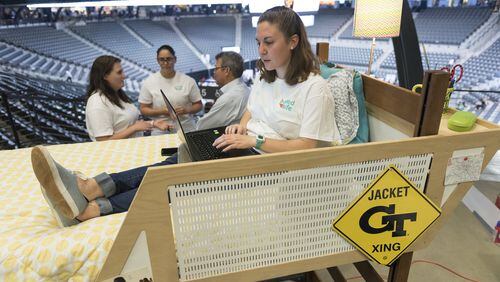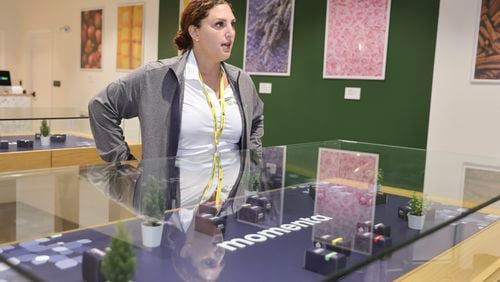All he did was roll out of bed in his Georgia Tech fraternity house. But his lofted bed was seven feet off the ground, and Clark Jacobs fractured his skull and needed emergency brain surgery in January 2015.
He would spend months healing from his injuries and relearning how to live. And his ordeal could have been prevented with one thing: a bed rail.
Jacobs' story inspired some of his classmates into action, and last week, two teams of seniors presented projects designed to prevent other college students from suffering the same fate. The projects, required for engineering students to graduate, could change the future of dorm furniture.
While bunk beds and loft beds sold for homes have side rails to prevent falls, there aren't regulations on the beds used on college campuses, according to Mariellen Jacobs. Since her son's injury, she's been on a mission to make sure beds are safer in dorms and fraternity houses. She founded Rail Against the Danger, or RAD, to raise awareness about the need for rails, something she admits she never thought about before Clark's fall.
Ugly, metal bed rails probably wouldn’t be a hit among the college crowd. Students on both project teams brainstormed ideas after interviewing classmates. Safety matters, but extra storage space would be an added bonus for students, the groups determined.
Rachel Bennett, a mechanical engineering major, said her group created a simple design that students can customize. Hooks, a whiteboard and an electrical outlet will make it easier for students to use computers in their beds.
“Students use laptops, so a lot of times desks are used for storage,” Bennett said. “It’s so simple to sit in your bed with the laptop.”
The two teams were among more than 200 projects on display last week, and both hope to get the attention of three furniture manufacturers. The school projects could turn into a real-world reality for the students.






